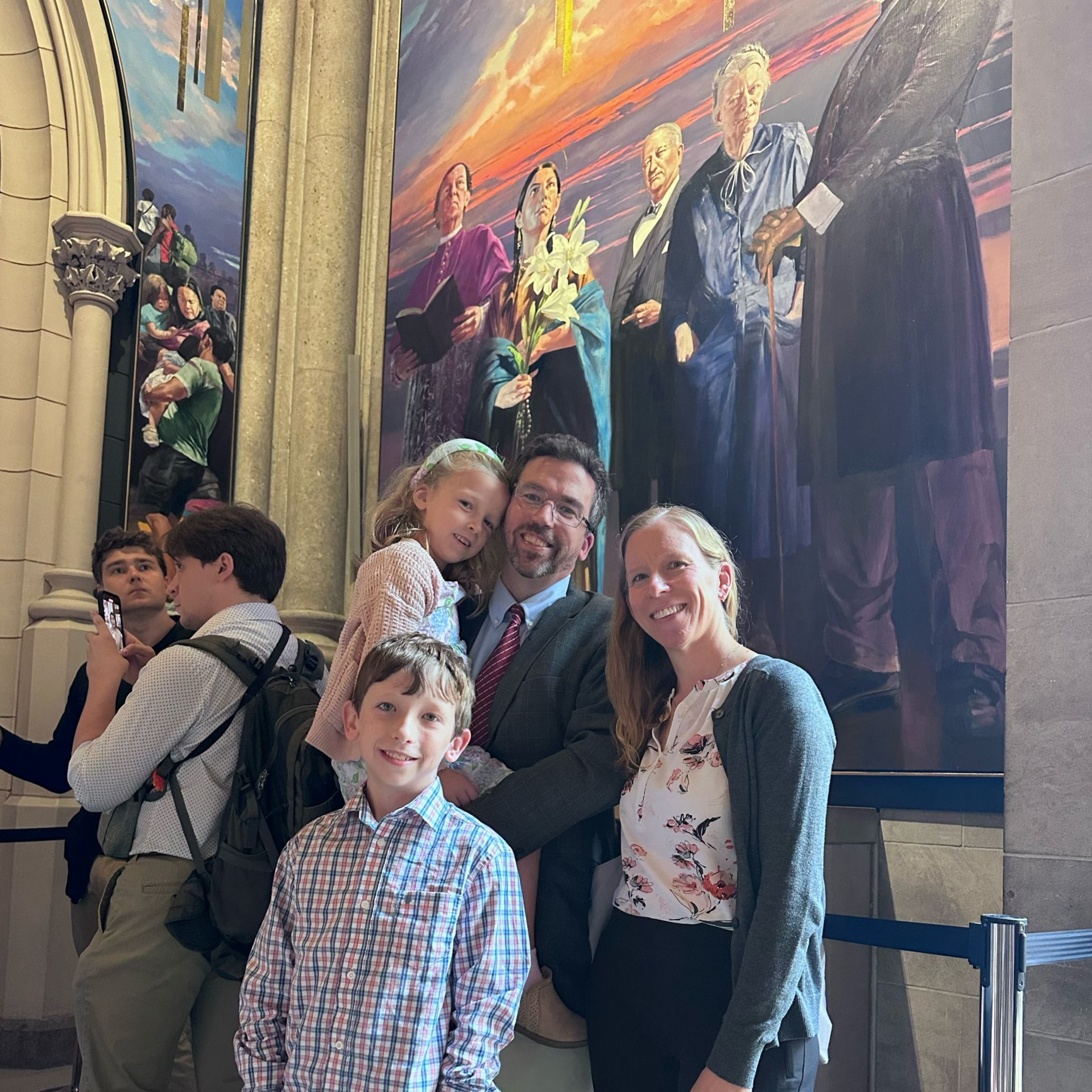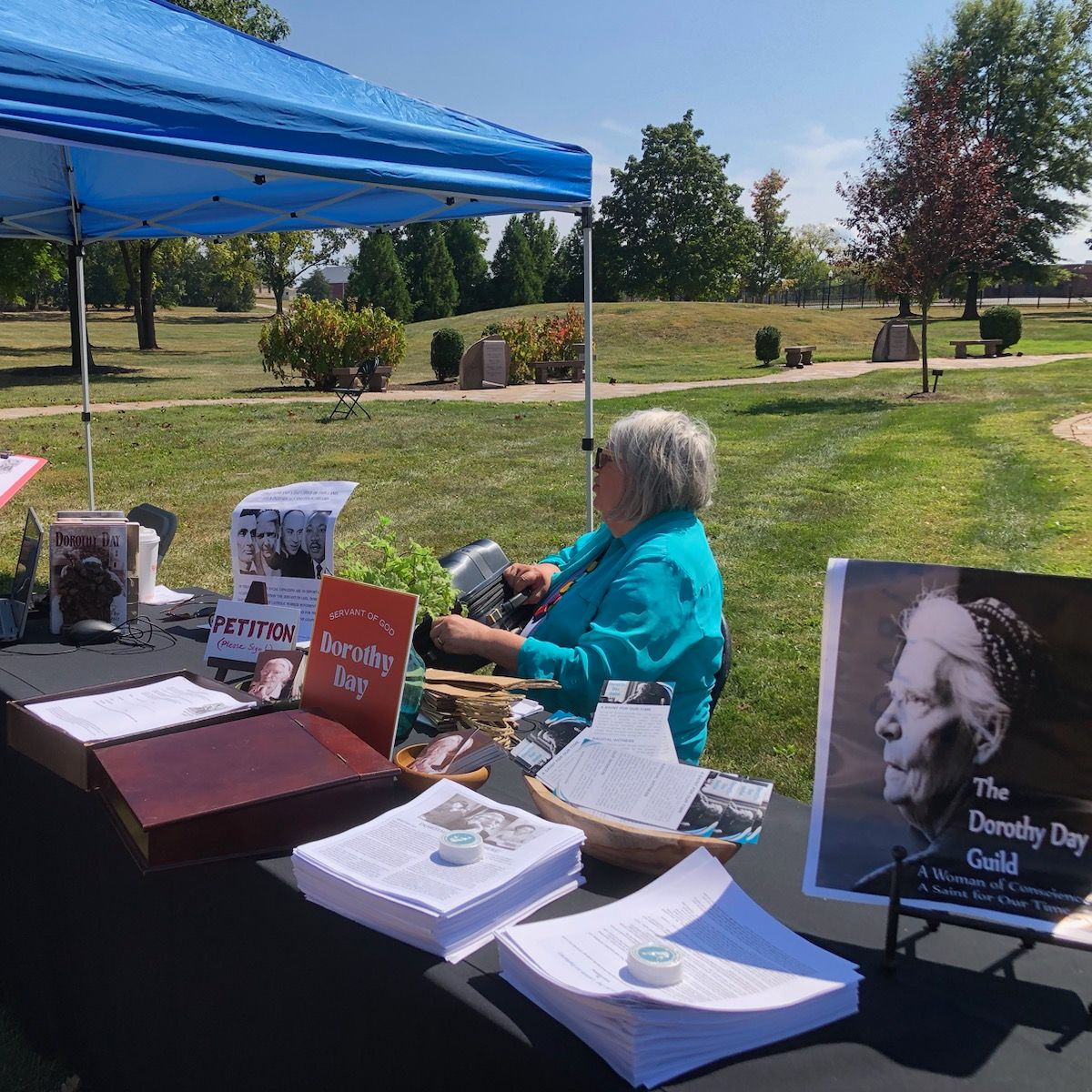Warm Winter Wishes
Dear friends and members of the Dorothy Day Guild,
Greetings to each of you on a chilly winter morning! As I write this, the sun is peeking over the trees and illuminating the bird tracks on the snowy rooftop outside my window. These crisp days are exciting, especially for those of us who are just beginning the semester at school or university, and we hope each of you is finding fulfillment in good work undertaken in the new year. Our Catholic Worker community here in South Bend was recently blessed with a visit from our dear friend Carmen Trotta, an advisor to the Dorothy Day Guild and long-time member of the New York Catholic Worker community.
Carmen spoke with my students about his participation in the Kings Bay Plowshares action and his many years offering the works of mercy and resisting war at St. Joseph House. It was an incredible gift for my class to have the chance to hear directly from someone whose life has been so strongly patterned after Dorothy’s own legacy and witness. Thank you, Carmen, for sharing your gifts with us, and thank you to the entire New York Catholic Worker community for your decades of fidelity to practices of voluntary poverty, hospitality, and Gospel nonviolence that Dorothy taught us!
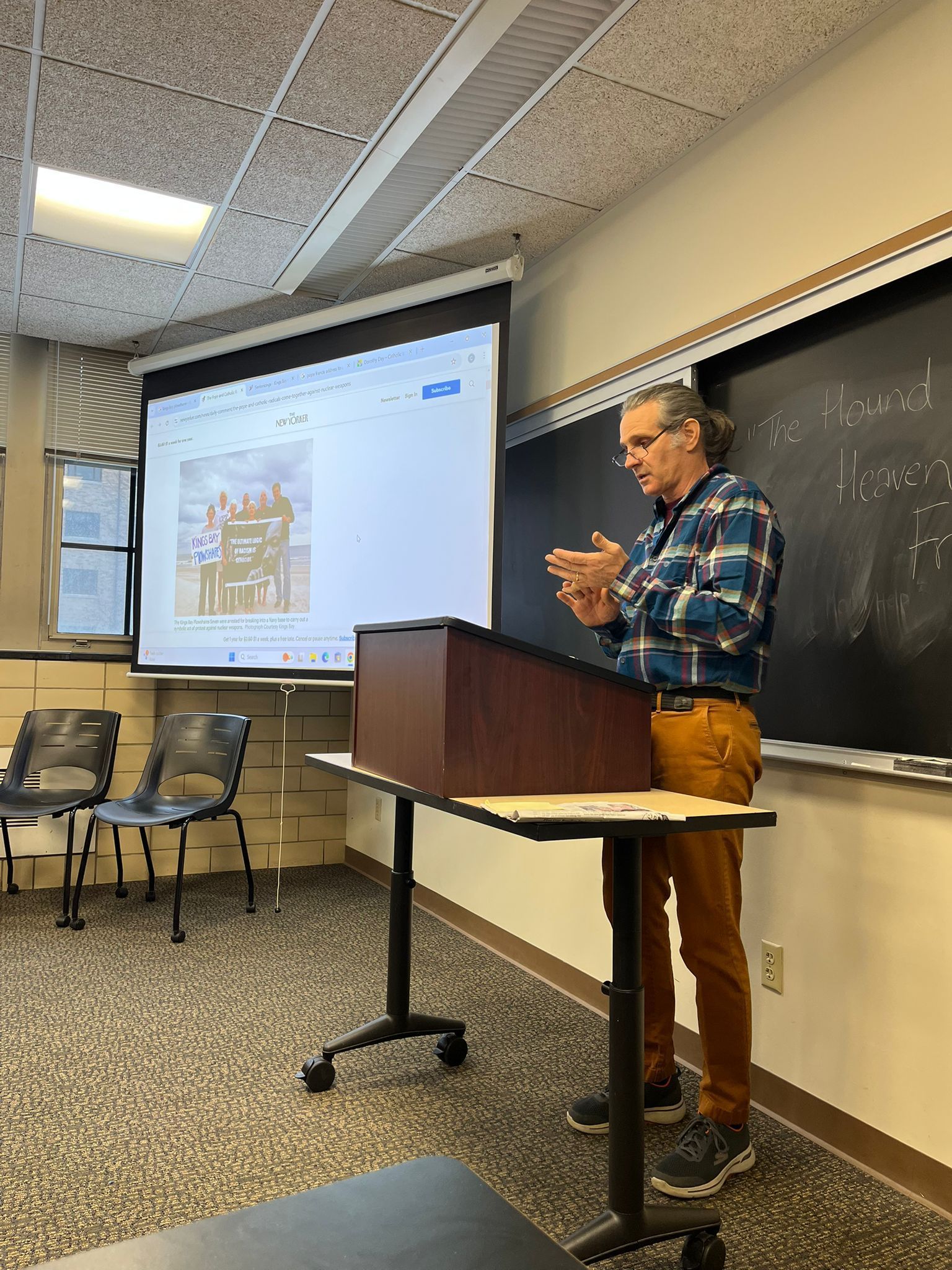
Upcoming events
We are so excited to announce our upcoming spring programs, which will carry us through the remainder of Ordinary Time and the Lenten season! Gradually, the days in the Northern hemisphere are getting longer. There’s a hint of warmth in the sunlight, and this means that our walking pilgrimages are back up and running after the holiday break! Thanks to the efforts of Joe Sclafani, Alex Avitabile, and Jodee Fink, we are now welcoming parishes, schools, and other community groups to request a guided pilgrimage through sites in lower Manhattan which were significant to Dorothy from her youth in Greenwich Village to the end of her life at Maryhouse. To request a pilgrimage, or for more information, please fill out the form on our website. We especially encourage those visiting New York to reach out to our pilgrimage team– this is a beautiful way to walk in Dorothy’s footsteps, particularly as Lent approaches and we consider how we might draw closer to God through the witness of her life.
Last year, Dr. Anne Klejment led a fantastic, historically-informed, and collaborative Lenten book club where we read
The Long Loneliness
together.
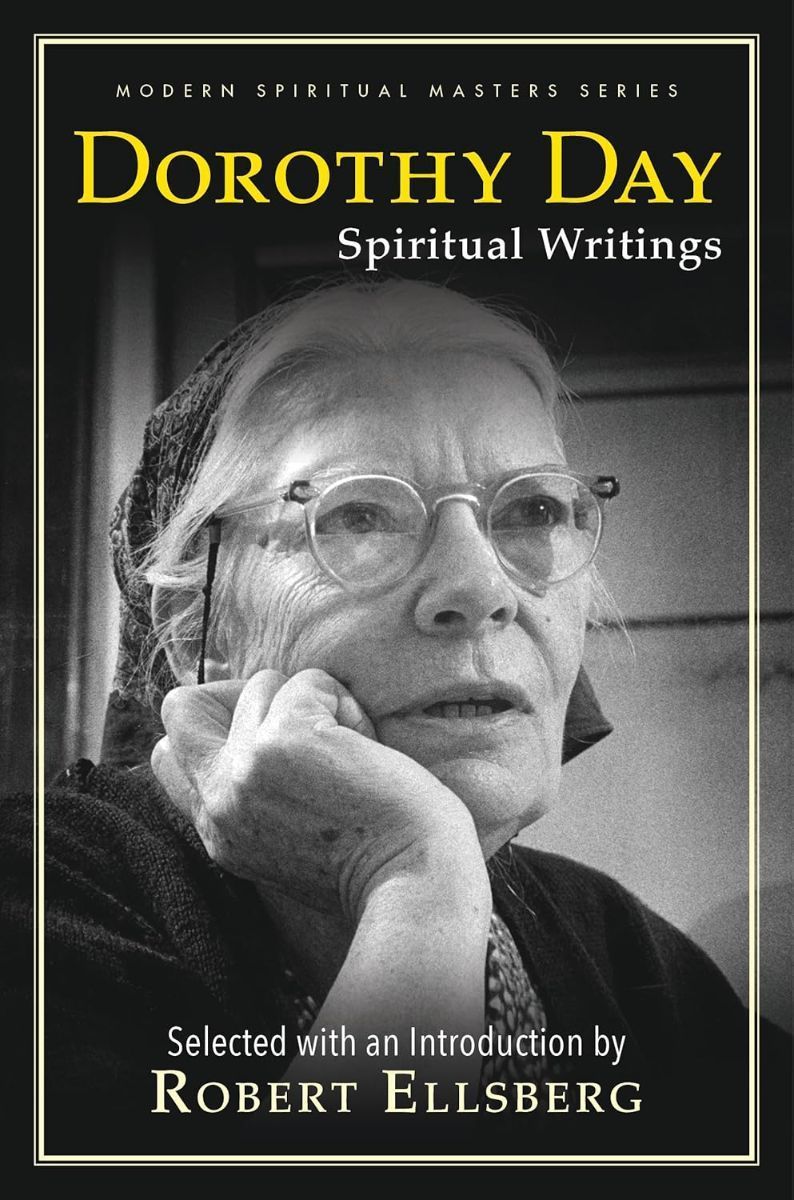
This program was so popular that we’ve decided to offer another online Lenten book club.
Beginning on Sunday, March 9th at 7:30 PM Eastern, Dorothy Day Guild board member and editor-in-chief of Orbis Books, Robert Ellsberg, will host our online reading group over the course of five Sundays in Lent. Each meeting will last one hour. During our time together, we will work through Robert's newest edited volume of Dorothy's work, entitled Dorothy Day: Spiritual Writings. This collection,
"explores the key themes that underlay [Dorothy's} spirituality, beginning with the call to see Christ in the poor. Day’s spirituality was deeply influenced by the “Little Way” of St. Thérèse of Lisieux, which showed the path to holiness in the daily exercise of patience, charity, and forgiveness. Dorothy extended this principle to the social dimension, the significance of the little protests we make or fail to make. She believed that each act of love, each witness for peace, increases the balance of love and peace in the world."
To register for this program, please use this form. If you do not yet have your own copy of Dorothy Day: Spiritual Writings, you can purchase a copy through Orbis Books. We also encourage book club members to request a copy through their local public library. We look forward to a series of wonderful conversations as we journey together with Christ, and with Dorothy, in the Lenten season.
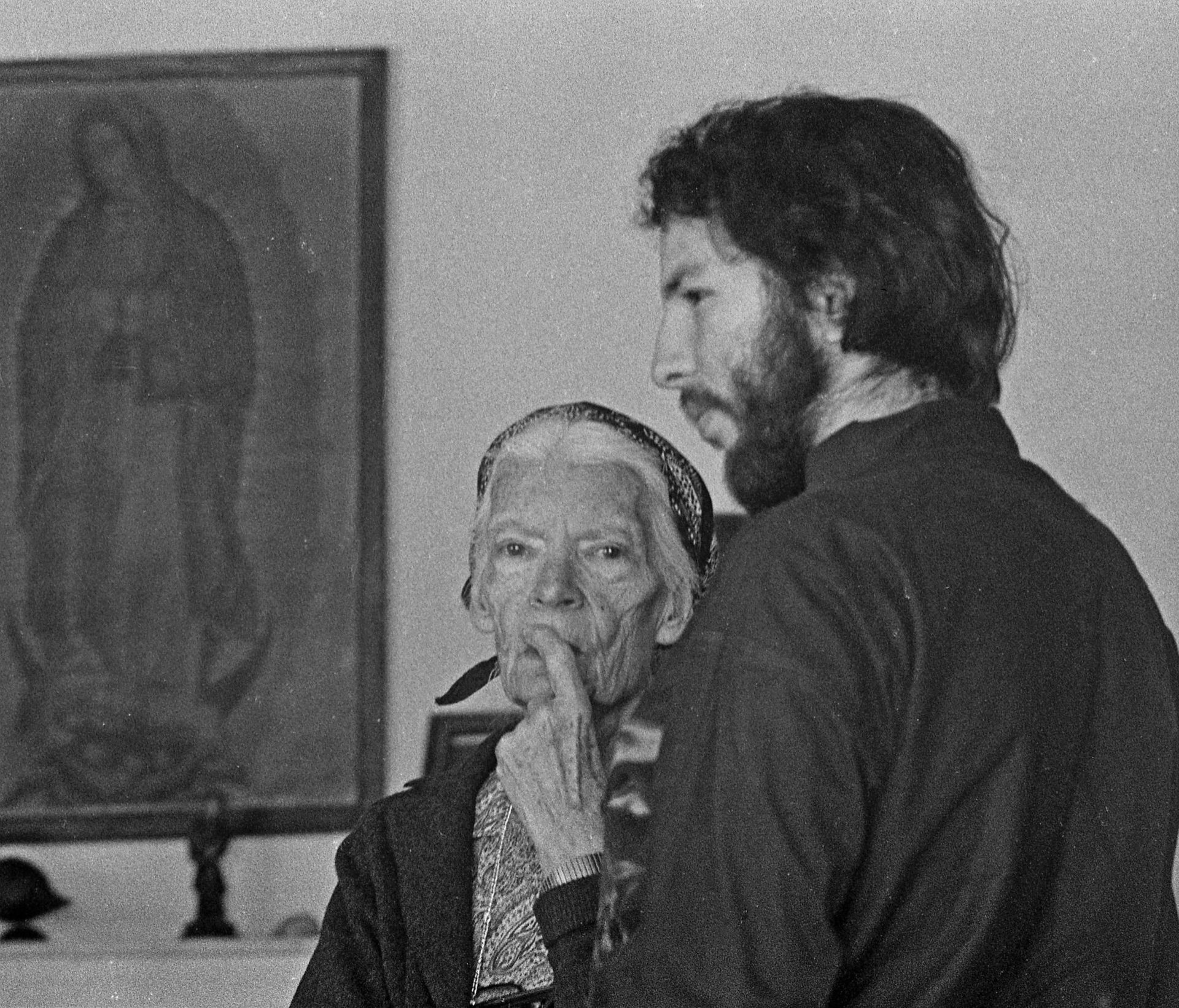
For those in the New York City area, Robert will also be giving a talk for the St. Ignatius 2025 lecture series, “Pilgrims of Hope,” on Monday March 31st at 7:00 PM. Robert’s talk, “The Long Pilgrimage of Dorothy Day,” will reflect on Dorothy’s long life "on pilgrimage," and the way her faith was tested and refined by ordinary life in her community and family and the challenges of her own time and context. St. Ignatius Loyola parish is located at 980 Park Avenue; all lectures in the series are held in Wallace Hall.
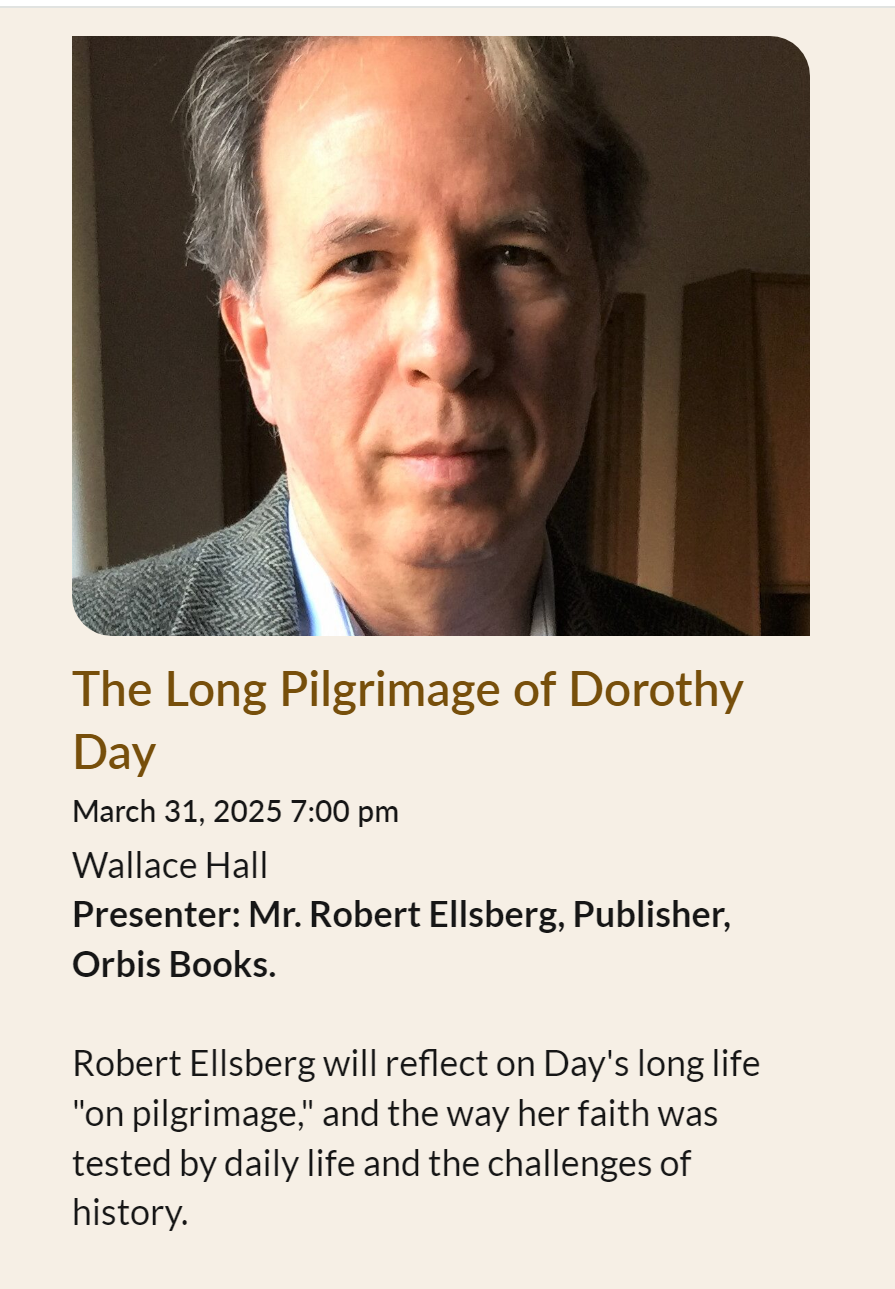
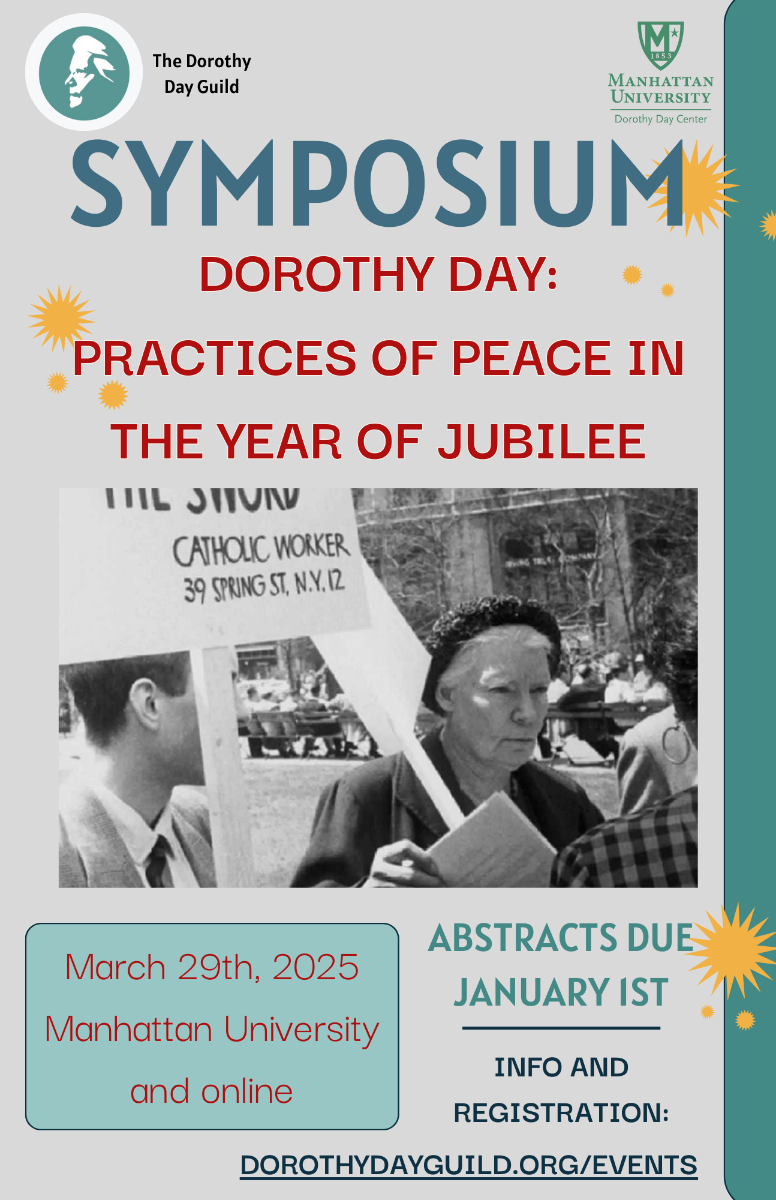
Registration is now open for our upcoming day-long symposium, “Dorothy Day: Practices of Peace in the Year of Jubilee.” This event will take place on Saturday, March 29th from 9:00 AM to 6:00 PM on the campus of Manhattan University in the Bronx and online. We received a number of wonderful proposals from students, peace practitioners, Catholic Workers, and academics, and have been working on putting together a schedule of roundtable discussions, meals, and opportunities for prayer and fellowship. This is going to be an amazing event, and we hope to see you there!
Finally, I am especially looking forward to the Dorothy Day Guild’s first in-person event in South Bend– we are thrilled to be co-sponsoring a performance of Lisa Wagner-Carollo’s Haunted By God: The Life of Dorothy Day on Friday, April 4th at 7:00 PM Eastern. We are so glad to be able to host this event at Our Lady of the Road, the drop-in and community center run by the St. Peter Claver Catholic Worker community at 744 South Main Street in South Bend, IN– a very apt setting for an artistic depiction of Dorothy’s life!
This one-woman play follows Dorothy from her days as a 17 year-old Greenwich Village bohemian through her later years as a tireless champion of social justice. "Haunted by God: The Life of Dorothy Day" has been touring the U.S. since May of 1990, and has also been presented internationally at the Pax Christi International Conference in Assisi, Italy in 1995, and at the 1999 Parliament of World Religions in Cape Town, South Africa.
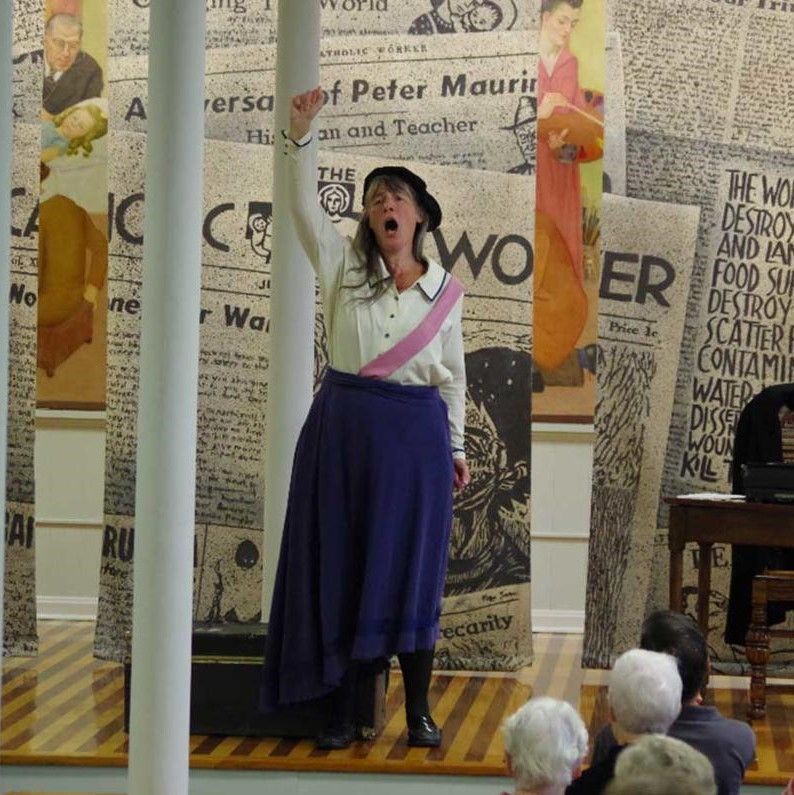
Many thanks to the College of Arts and Letters at the University of Notre Dame for their co-sponsorship of this event, and to the South Bend Catholic Worker community for welcoming us to Our Lady of the Road!
Reading Recommendations
Following the holiday season, January tends to be a slower time for new books and articles, but the ones we have to share with you this month are phenomenal. Alexander Shoplik’s recent piece for Commonweal, “The Best Type of Catholic There Was,” examines the influence of the Catholic Worker movement on 20th century Japanese-American author Hisaye Yamamoto and the close friendship between Yamamoto and Dorothy.
Like Dorothy, Yamamoto worked as a journalist, in addition to publishing essays and short fiction. While living in California, she was introduced to the Catholic Worker movement through the newspaper. Shoplik writes,
“It was in this context—after internment, her brother’s death, and the Shorts’ [a Black American family who were killed for moving into a white neighborhood] murder—that Yamamoto began reading the Catholic Worker, first for work and then out of personal interest. Yamamoto left the Tribune in 1948 and received the John Hay Whitney Foundation Opportunity Fellowship in 1950. In these years, she adopted a boy, Paul—“a baby, born in the family, that nobody was in a position to care for”—by herself. Paul was “a cradle Catholic,” but Yamamoto “wanted him to become the best type of Catholic there was—a Catholic Worker.”
Yamamoto and her son Paul lived at the Peter Maurin farm on Staten Island, where they lived for two years, where photographer Vivian Cherry took a series of photographs of them with other members of the community.
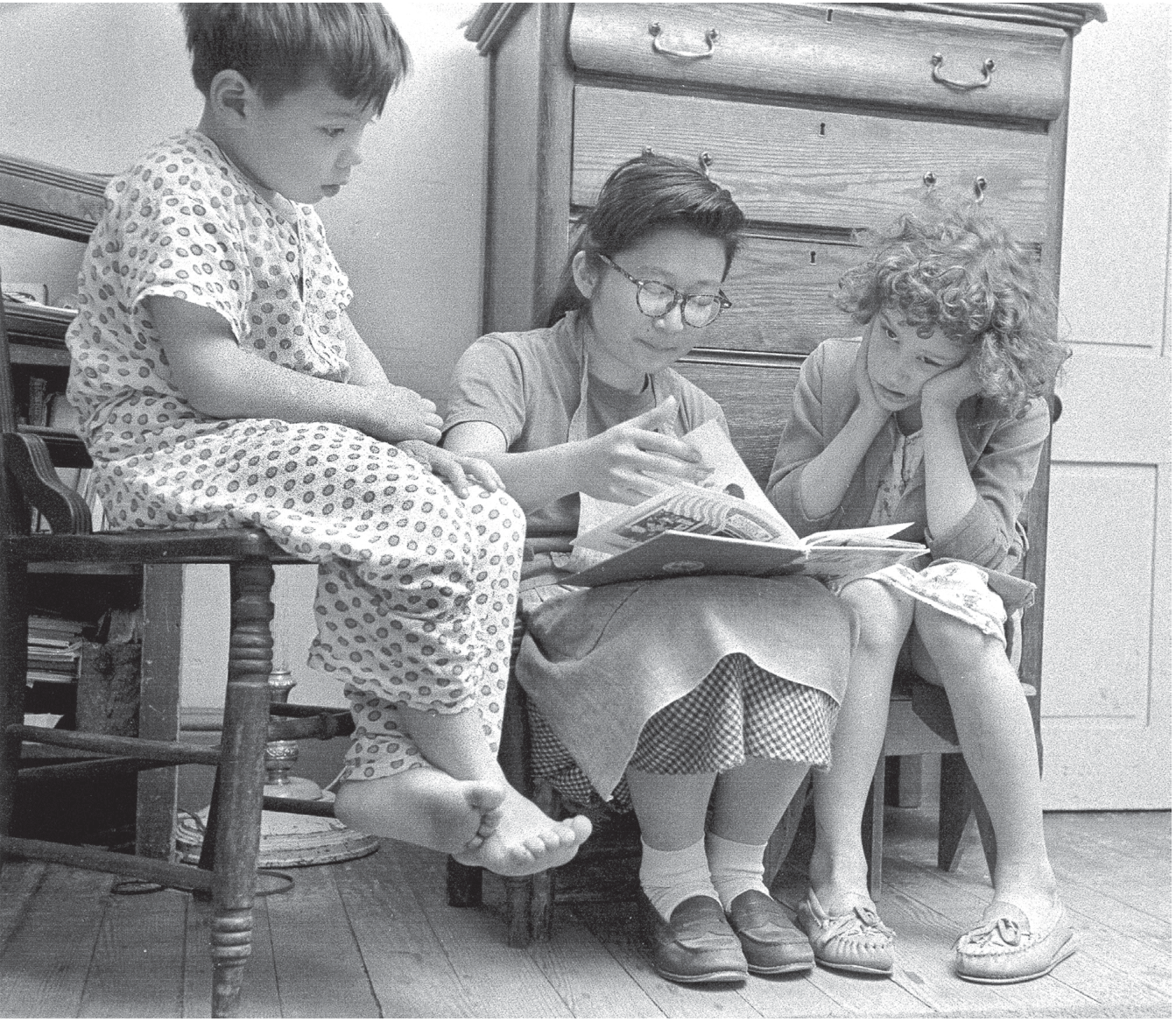
Dorothy admired Yamamoto’s gifts for both intellectual and manual labor, praising her in an April 1954 column for The Catholic Worker and mentioning her again in several other issues of the paper, referencing Yamamoto’s reporting trips and her marriage to fellow Catholic Worker Tony De Soto. The admiration was mutual; as Shoplik tells us,
“Years later, Yamamoto remembered their first meeting at Christmas Eve Midnight Mass with the Maryknoll Sisters in Los Angeles: ‘So this was Dorothy Day, this tall woman in a worn black coat and black beret, with the splendidly chiseled, ageless face, with her white hair braided in a coronet atop her head.’”
Yamamoto contributed a number of columns to the paper throughout the early 1950’s, describing the bustle of community life on the farm, but she also drew on her time at the Worker and her relationship with Dorothy in her fiction, particularly in her short story ‘Epithalamium,’ in which a young woman falls in love with a charismatic fellow member of the Christian community in which she resides. The character “Madame Marie,” a wise, maternal figure who attempts to guide and protect the protagonist, is based on Dorothy.
We are so grateful to Alexander Shoplik for his retrieval of the influence of Dorothy’s legacy, especially her commitment to Gospel pacifism, on Yamamoto’s writing. If this article sparks your interest, we also recommend checking out Greg Robinson’s The Unknown Great: Stories of Japanese Americans at the Margins of History published last year by the University of Washington Press. Our friend Matthieu Langlois contributed to the section on Yamamoto and offers a detailed analysis of her articles on the exploitation of Japanese laborers in canning factories as well as her chronicles of domestic life on Peter Maurin Farm. Matthieu also explores to what extent Yamamoto’s time at the Worker and with Dorothy influenced her eventual self-identification with the Gospel. Although she wanted her son Paul, whom she adopted when he was only a few months old, to be raised Catholic, she herself was not Catholic, and tended towards agnosticism.
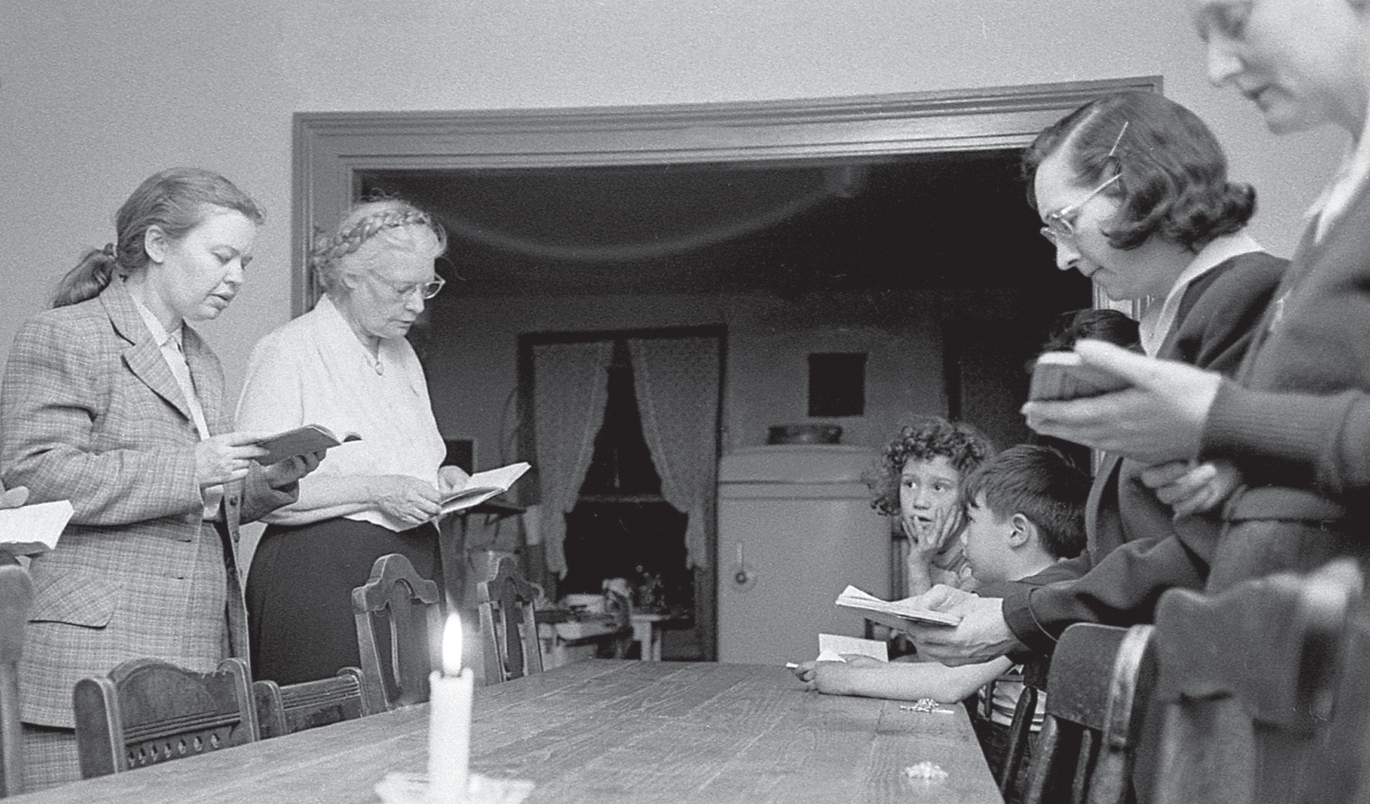
However, as Matthieu writes,
“Yamamoto was still at least open to the possibility that God existed. As she wrote in one of her columns: “My present pro-peace argument laps over into arguments for a possible God and a possible after-life.” Yamamoto’s beliefs were thereby closer to those of Day and the Catholic Worker than those of secular pacifist organizations.”
Later in life, though, Yamamoto spoke with literary scholar Dr. King- Kok Cheung and claimed a Christian identity for herself, not just her son, stating “I’m a Christian because I believe that Jesus Christ is the Son of God.” She also named Dorothy as “the most important person this country has produced.” Matthieu cites this as a significant area for additional exploration, noting that “the nature of Yamamoto’s encounter with the philosophy of Dorothy Day and with Day herself, as well as the religious exploration she undertook during this period, would seem to merit much further research and discussion.”
We look forward to sharing additional scholarship and reflections on Yamamoto’s engagement with Dorothy and the Worker in the coming months! In the meantime, we hope you will check out the legacy of this too long-overlooked literary giant in her own words. You can find ‘Epithalamium,’ the story based on Yamamoto’s time at Peter Maurin Farm in Seventeen Syllables and Other Stories through Rutgers University Press or your local library.
For Plough, Dr. Laurie Johnson just published “The Catholic Worker Pushes the Limits,” a deeply thoughtful exploration of some of the tensions inherent in the thought of both Dorothy and Peter Maurin, and in the daily practice of contemporary Catholic Worker communities. Laurie is a professor of political science at Kansas State University and is a co-founder of the Maurin Academy for Regenerative Studies. In this article, which is adapted from her 2024 book, The Gap in God’s Country, Laurie considers the space that the Catholic Worker occupies as an anarchist movement that frequently engages with local, state, and federal government structures through protest and direct action, and an anti-capitalist movement whose members often find themselves distributing the excess goods of a capitalist economy to those most victimized by that same system. This tension, present even in the sometimes conflicting demands of commitments to both voluntary poverty and hospitality, can be a productive and creative space which enables Catholic Workers to enact new possibilities for a more just social order. For example, Johnson notes that,
“When the US government instituted “Operation Alert” in 1954, Americans nationwide took cover for fifteen minutes at the sound of sirens: a public rehearsal of preparedness for nuclear war with the USSR. When the sirens sounded in 1955, Dorothy Day and twenty-six others protested outside as most New Yorkers hid under their desks… Day carried on protesting for a decade, resisting the conditioning of American citizens to accept the catastrophe of nuclear war – in the event of a strike, even occupants of fallout shelters, as Life magazine noted at the time, “might be barbecued.” By 1961, twenty-seven protestors had grown to 2,500. Operation Alert was scrapped.”
Now approaching its ninety-second birthday, the Catholic Worker movement “seems to have more staying power than many movements that have emerged in opposition to capitalism. Even in a world that has changed dramatically since the 1930s, Catholic Worker groups have adapted to new challenges and in response to new needs time and again.” Pope Benedict XVI tells us that the Gospel grows by attraction, not proselytizing. Johnson sees the continuing draw of the Catholic Worker movement’s radical commitments to voluntary poverty and the enactment of Catholic social teaching as evidence that Dorothy and Peter’s analysis of the social order in their own time is revelatory of the Truth for ours.
Finally, we would like to congratulate our friends Jerry Windley-Daoust and Renée Roden over at the Roundtable on their first anniversary of publication. This twice-weekly Substack has been an invaluable source of intra-movement discussion, news, and reading recommendations from around the Catholic Worker. If you’re not already subscribed to this newsletter, we highly encourage you to sign up. Our Catholic Worker community here in South Bend has so appreciated how the Roundtable has helped us connect with Workers in other parts of the world and share longer-form news with friends and supporters more frequently than our summer print newsletter allows.
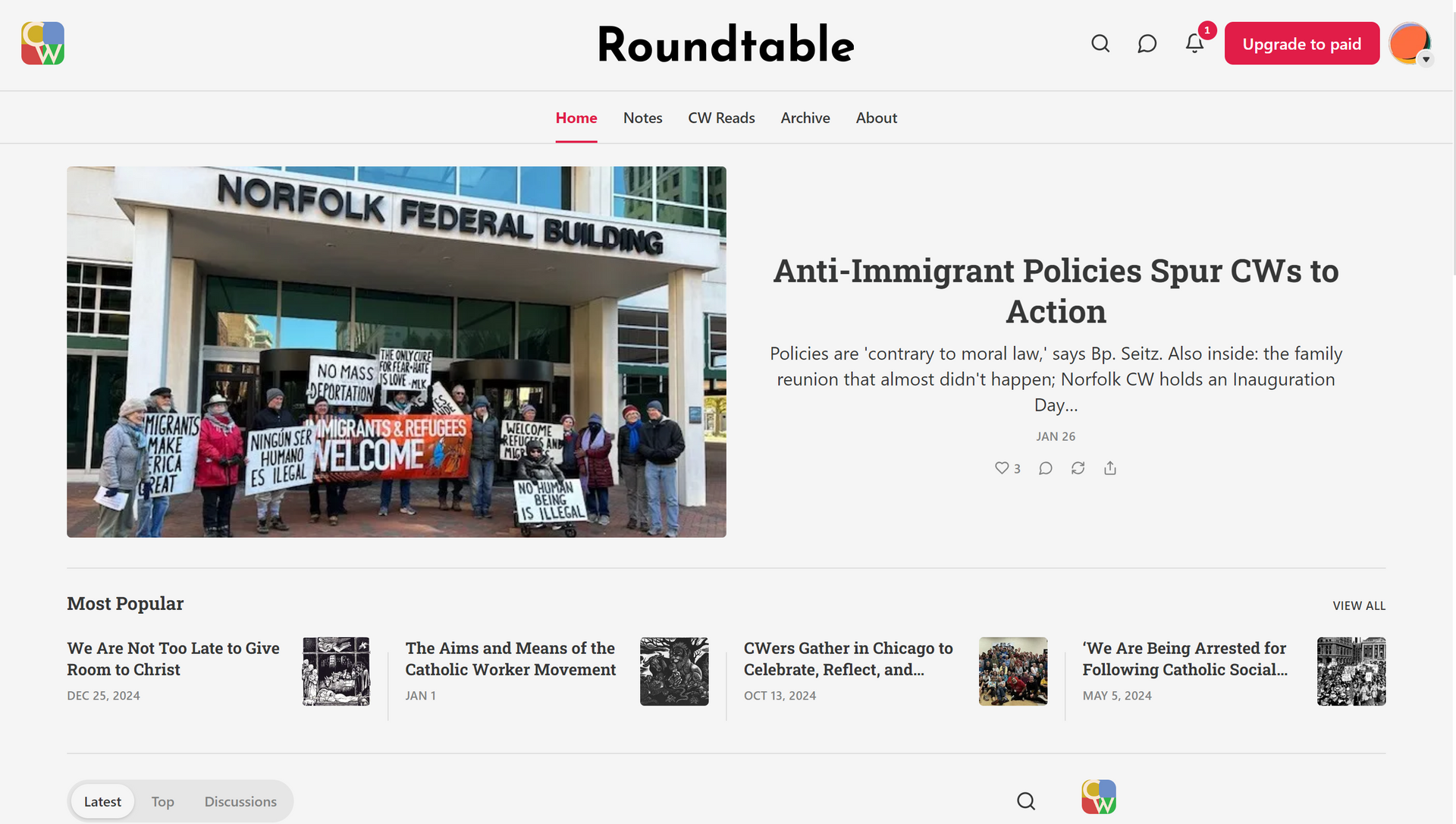
As a teacher, I’ve assigned some of Jerry and Renée’s original reporting to the students in my “American Catholic Radicalism” course this semester and have personally loved the Thursday “CW Reads” edition for its curated recommendations from Catholic Worker newspapers, and other digital and print publications. My favorite this month has been Colleen Shaddox’s “Moses Bunn Goes Home,” for Notre Dame Magazine. Shaddox brings us alongside her as she works to find the family of a beloved, recently deceased resident of the Rosette Neighborhood Village at the Amistad Catholic Worker in Connecticut. In death, Moses, whom Shaddox remembers as a gentle peacemaker, a man of letters who might have had a promising career as a football running back, comes home to parents, aunts and uncles, and an entire extended family who never stopped waiting for his return. Shaddox spoke at length with Moses’ uncle Ronny Shields, who said that his nephew might have been lost to them forever in other circumstances: “He would have been a John Doe…if you people had not loved our Moses.”
“We did love him,” Shaddox concurs. “And that is why burying the dead is a work of mercy, because it involves fiercely asserting a person’s worthiness of love. As with any work of mercy, it requires seeing the person you are helping as infinitely precious in dignity.”
When a social worker once visited the Catholic Worker and asked Dorothy how long guests were permitted to stay, Dorothy replied simply, “We let them stay forever. They live with us, they die with us, and we give them a Christian burial. We pray for them after they are dead. Once they are taken in, they become members of the family. Or rather they always were members of the family. They are our brothers and sisters in Christ.” Our thanks to Renée and Jerry for recommending Shaddox’s excellent writing, which we are sure will inspire significant reflection for many readers this winter. All of us at the Dorothy Day Guild would like to extend our deepest gratitude to the members of the Amistad Catholic Worker community for offering this final corporal work of mercy to our relatives and for making the reality of our kinship visible. We are sure that Dorothy herself honors this work and is interceding on behalf of all the members of the Rosette Neighborhood Village, living and dead.
Prayer requests
This month, we would like to ask each of you to keep several significant requests in prayer, asking Dorothy for her intercession on behalf of these beloved members of our extended family.
First, a woman from Chicago who requested to remain anonymous has asked for prayers for her husband, whose hand was injured. She has asked us to pray that his hand will be totally healed and that he will continue to be able to work and to drive.
Also in Chicago, we recently learned of the death of David Stein, a member of the St. Francis House Catholic Worker community for over thirty years. David was an artist, a writer, and a practitioner of the works of mercy. Originally from New York, David spent time at various Catholic Worker communities in the Midwest before becoming a permanent member of the St. Francis House community. Please join us in praying through Dorothy’s intercession for the repose of David’s soul, and for the comfort of those who knew and loved him in life. To read or share remembrances of David, please visit this page on the Catholic Worker website.
Finally, please pray for a young member of Dorothy’s family and of ours: Adelyn Tamar, Dorothy’s great-great-granddaughter, who is currently in the hospital undergoing long-term treatment. Adelyn is currently being accompanied by her mother and her grandmother, Martha Hennessy. We are sure that just as she did in life, Dorothy is still holding her family in prayer; let’s join our prayers with hers and ask God to give comfort and healing to Adelyn and those who love her, especially her mother and grandmother.
Many thanks to each of you who has submitted a prayer request for the Guild and to those who have interceded on their behalf. Prayer, both for Dorothy’s canonization and for the needs of the world through her intercession, is both a spiritual work of mercy and a significant way that you can assist our cause. If God so wills, it will be out of these prayers that a miracle eventually occurs, enabling Dorothy’s sainthood cause to continue moving forward. We know that regardless of when or how a miracle comes to pass, Christ accomplishes something for the redemption of the world through these prayers, and we encourage each of you to continue asking Dorothy’s assistance in bringing the needs of your families and communities before God.
A few words from Dorothy
In these last days of January, South Bend has just emerged from a cold snap, the kind of deep freeze that burns the lungs and refracts colorful sundogs through the ice crystals in the air in the late afternoon. Members of our Catholic Worker community spent the first three days of last week securing hotel rooms for our most vulnerable unhoused neighbors and shuttling guests to the temporary warming stations the city opened during the state of emergency. It’s been several years since we’ve experienced this type of sustained cold, although winter temperatures like this used to be more common. In The Long Loneliness, Dorothy wrote about family memories of ice boats on the Hudson, the river freezing to a depth that allowed her great-aunt to skate from Poughkeepsie to Marlboro.
These bitter winter days and nights are hardest on the poor. In December of 1937, Dorothy wrote from the Catholic Worker house on Mott Street in an appeal to her readers for help continuing the necessary, contingent work of feeding the hungry day in and day out:
“The long line of men begins every morning at five thirty. I can hear them coughing and talking under my window as I wake up, and see the reflection of the flames cast on the walls of my room from the fire they build in the gutter to keep warm. Many of the men bring boxes and bits of wood to cast on it, and as the line moves up, the men get a chance to warm themselves. Many of the men have no overcoats or sweaters. It is good to see that fire as I go down to Transfiguration Church to Mass. The flames are brilliant against the dark street and the sky is purple in contrast. There is never so much color during the day…
Our Lord said that when you have a feast, do not invite your friends and neighbors who have plenty, but go out and bring in the destitute. If you cannot feed the hungry yourselves, give us the aid that will help us to do it for you. Our Lord will love you for it, for after all, we must remember that each of these seven hundred men or so, represents Christ to us. The dignity they still possess is theirs because Christ by sharing our human nature has dignified and ennobled it.
I do not believe for one minute that we will have to stop our line. How can we lack faith when we can say each morning after Mass, “Look on the face of Thy Christ,” – Christ presents in us in His humanity and Divinity at that moment, and is present in the least of His children.”
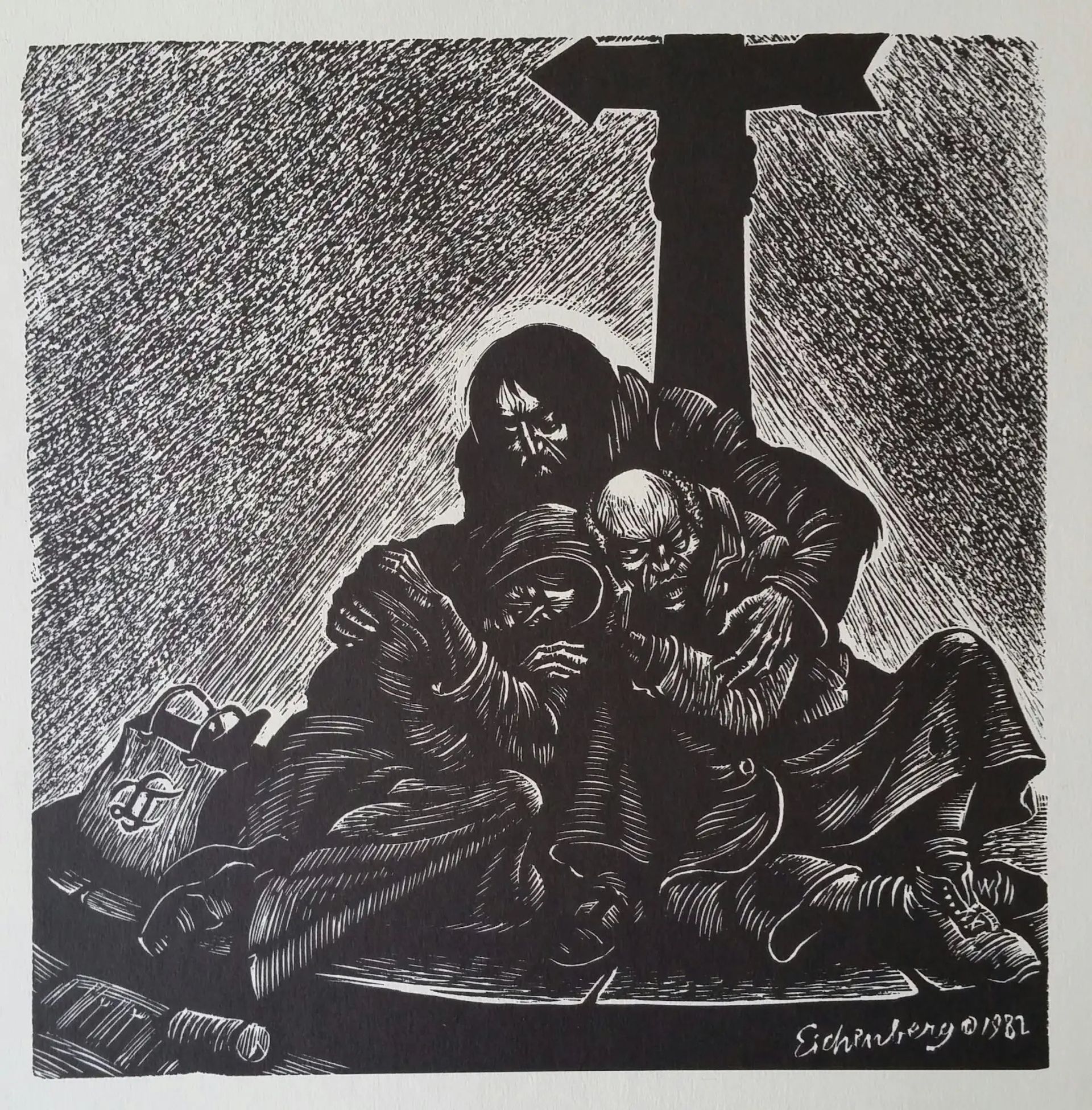
Dorothy, like all those who have taken up the Gospel call to voluntary poverty, understood the impossibility of fully imitating the precarious lives of the poor, who still in South Bend, and perhaps in your city too, spend the hours before dawn and after dark waiting in line, for food, for a bed at the emergency shelter, for acknowledgement. Voluntary poverty instead strips away all unnecessary details and distance, just as the frigid temperatures strip the humidity out of the air and enable us to see and hear with astounding clarity. Christ is in our midst. Christ is present in the members of His Body, most of all in the poorest of our brothers and sisters. Our prayer for each of you this month is that you meet, and recognize, and greet Him.
In peace,
Dr. Casey Mullaney, on behalf of the Dorothy Day Guild
Share this post
